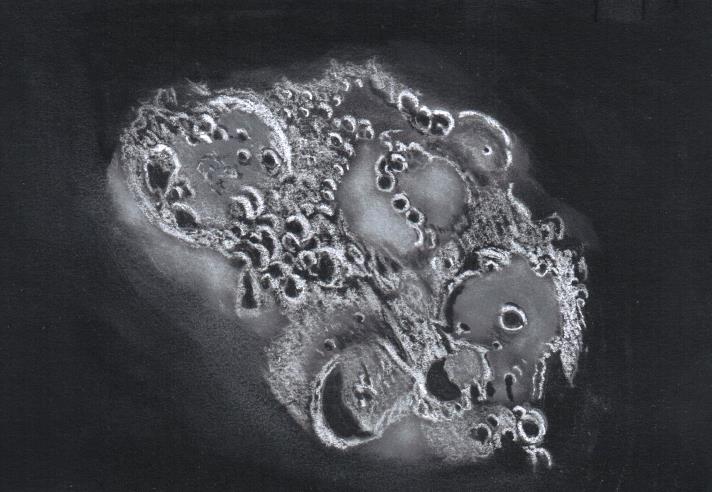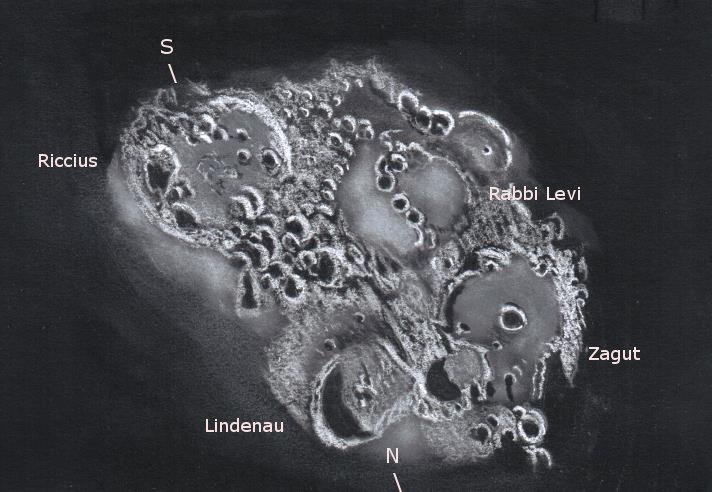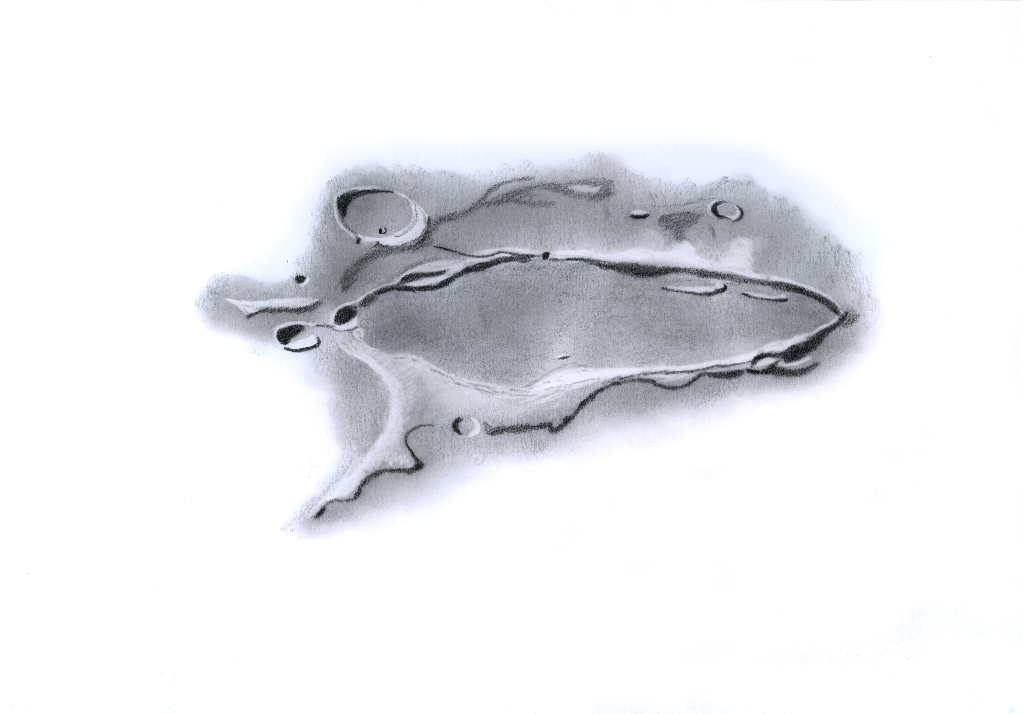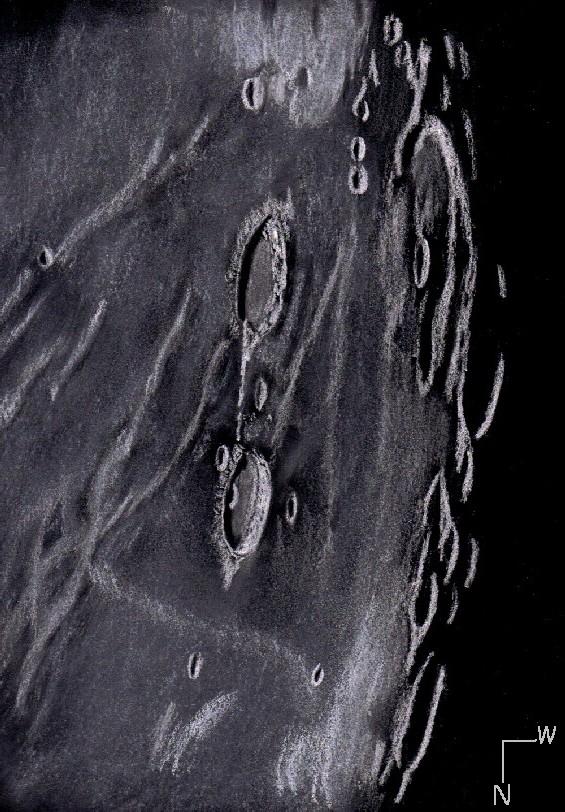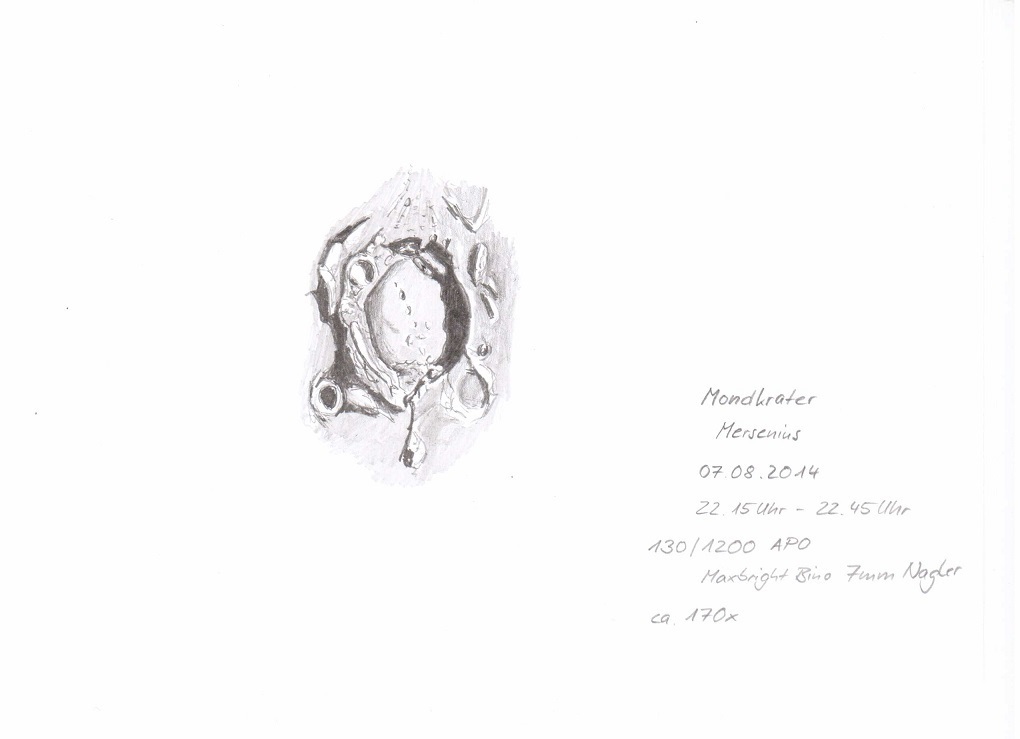
Hello,
After some weeks during the “White nights” without a look in the sky, I started observation at the 7th August with my new 130/1200 Aspherical Doublet Apochromat (it was planned by Ralf Mündlein and me in the last two years) the planet. The air was quite well and the conditions were warm and dry.
A nice crater with some little impacts and mountains at the bottom took my attention. So I made a drawing of this view. I hope you like the “Mersenius”.with it´s nice landscape.
CS Uwe
Object: Moon
Object Name: Crater Mersenius
Telescope: 130/1200 Aspherical Doublet Apochromat
Eyepiece: 7mm Nagler / Maxbright Binocular
Magnification: about 170x
Location: near Tauberbischofsheim Germany


